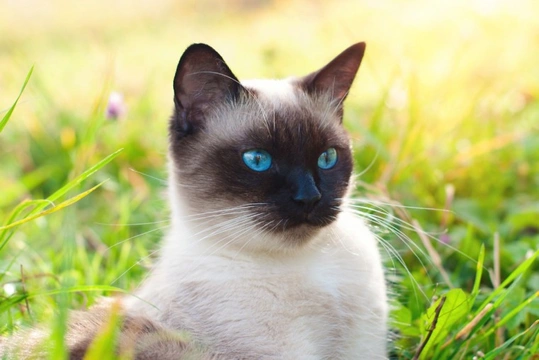
Feline Hyperesthesia Syndrome
Feline hyperesthesia syndrome is a condition often referred to as "twitch-skin syndrome" or FHS for short. The condition is also known as "psychomotor epilepsy" and it's a strange disorder that results in cats licking or biting certain areas of their bodies, namely their backs, tails and legs making the areas extremely sore. Feline hyperesthesia syndrome impacts a cat's neuromuscular and nervous system as well as their skin causing all the damage and it can affect any breed at any stage of their lives although some breeds appear to be more predisposed than others.
Cat Breeds Most at Risk
As previously mentioned, studies have established that certain cat breeds appear to be more predisposed to developing feline hyperesthesia syndrome that others and this includes the following breeds:
Symptoms Associated with the Disorder
When cats suffer from FHS, the symptoms can come on in bursts with some lasting a short time whereas on other occasions episodes can go on for a few minutes. The strange part about the disorder is that cats will act normally in between these episodes. However, when the symptoms manifest themselves they are typically as follows:
- Their skin twitches
- Tails swish violently from side to side
- Cats repeatedly lick and bite at the backs of their tails and their upper back legs for no apparent reason
- When cats suffer an episode, their pupils often dilate and they appear quite agitated and they start behaving quite strangely.
The Causes
Thankfully, FHS is a rare condition, but the exact reasons why some cats develop the disorder remains a mystery. As such more research is needed into understanding it although there is some evidence that it might be bought on by behavioural issues. Other reasons why a cat might develop FHS might include the following:
- A seizure problem
- A neurotic issue
There is also some evidence that suggests over-active cats might be at greater risk of developing the disorder and that stress could also trigger an episode. With this said, it is also thought the condition could develop because of several factors in a cat's life as well as their environment.
Diagnosing the Problem
The only outward sign of there being something wrong with a cat is their damaged coat and skin which typically means hair falls out and skin gets sore looking due to cats over-licking and biting at it. Studies have shown that when some cats bite and lick at their coats, it stimulates their muscles which then brings on an episode. With this said, diagnosing the condition often proves challenging because there is never an obvious physical reason why a cat might be suffering from FHS. As such, a vet would want to eliminate any other health issues that might be causing the symptoms which includes:
- Other skin disorders
- Diseases that affect a cat's forebrain
Treatment Options
Unfortunately, there are no specific treatment options available for cats suffering from FHS and there is no cure either. A vet would treat the symptoms with an end goal being to suppress a cat's episodes which can help improve behavioural issues. With this said, a vet would want to carry out the following test to establish if a cat is suffering from some sort of neurological issue which could be triggering their episodes:
- An MRI scan
Living with a Cat with Feline Hyperesthesia Syndrome
Cats diagnosed as suffering from FHS need to be kept in a quiet, relaxed environment to prevent any stress which could bring on an episode. Should a cat's self-mutilation be severe, a vet might recommend they wear an Elizabethan collar to prevent them from doing further damage to themselves or the vet might suggest putting on a tail bandage which is another way of protecting tails. It is important for cats to be kept relaxed and calm which in short means removing them from any stressful situations when they suffer from feline hyperesthesia syndrome.



